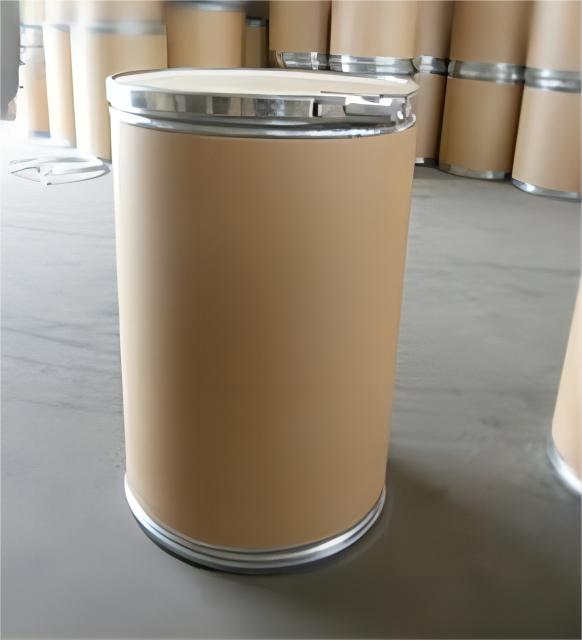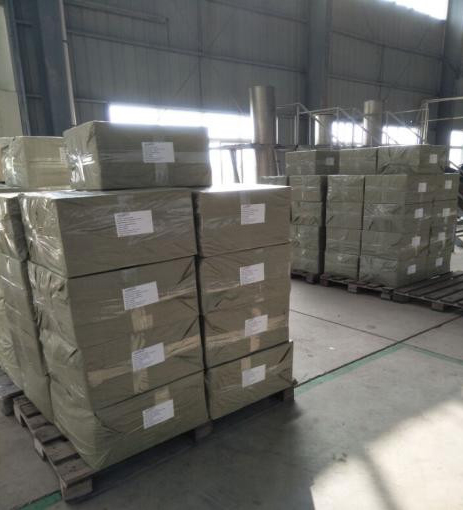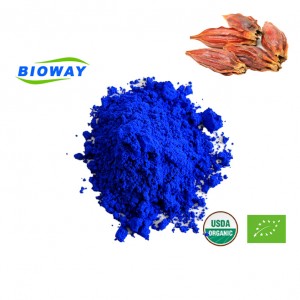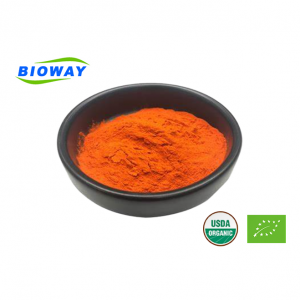Larch Extract Taxifolin / Dihydroquercetin Powder
Larch extract taxifolin, also known as dihydroquercetin, is a flavonoid compound obtained from the bark of the larch tree (Larix gmelinii). It is a natural antioxidant used in traditional medicine for its potential health benefits. Taxifolin is known for its anti-inflammatory, anti-cancer, and anti-viral properties. It is also used as a dietary supplement and is believed to support cardiovascular health, liver function, and overall immune system function. Dihydroquercetin powder is a concentrated form of taxifolin that can be used in various health and wellness products.
| Product name | Sophora japonica flower extract |
| Botanical Latin Name | Sophora Japonica L. |
| Extracted parts | Flower Bud |
| Analysis Item | Specification |
| Purity | 80%, 90%, 95% |
| Appearance | Green-yellow fine powder |
| Loss on drying | ≤3.0% |
| Ash Content | ≤1.0 |
| Heavy metal | ≤10ppm |
| Arsenic | <1ppm |
| Lead | <<5ppm |
| Mercury | <0.1ppm |
| Cadmium | <0.1ppm |
| Pesticides | Negative |
| Solvent residences | ≤0.01% |
| Total Plate Count | ≤1000cfu/g |
| Yeast & Mold | ≤100cfu/g |
| E.coli | Negative |
| Salmonella | Negative |
1. Natural sourcing: Larch extract taxifolin is derived from the bark of the larch tree, making it a natural and plant-based ingredient.
2. Antioxidant properties: Taxifolin is known for its strong antioxidant properties, which can help protect products from oxidation and degradation.
3. Stability: Dihydroquercetin powder is known for its stability, making it suitable for use in various formulations and products.
4. Color and flavor: Taxifolin powder may have a light color and minimal flavor, making it suitable for use in food and beverage applications without significantly altering the sensory characteristics of the final product.
5. Solubility: Depending on the specific formulation, taxifolin powder can be water-soluble or soluble in other solvents, allowing for versatile applications in different product types.
1. Antioxidant properties that may help protect cells from damage.
2. Potential anti-inflammatory effects.
3. Support for cardiovascular health.
4. Possible liver-protective properties.
5. Immune system support.
6. Anti-viral properties.
7. Potential anti-cancer effects.
1. Dietary supplements: Used as an ingredient in antioxidant supplements, immune support formulations, and cardiovascular health products.
2. Food and beverages: Added to functional foods, energy drinks, and nutritional bars for its antioxidant properties.
3. Cosmetics: Included in skincare products such as anti-aging creams, serums, and lotions for its potential skin-protective effects.
4. Pharmaceuticals: Utilized in the formulation of medications targeting cardiovascular health, liver support, and immune system modulation.
5. Animal feed: Incorporated into animal feed formulations to support overall health and well-being in livestock and pets.
6. Nutraceuticals: Used in the production of nutraceutical products aimed at promoting overall health and wellness.
7. Industrial applications: Employed as an antioxidant in various industrial processes, such as in polymers and plastics to prevent oxidation and degradation.
8. Research and development: Utilized in scientific research for studying its potential health benefits and applications in various fields.
Storage: Keep in a cool, dry, and clean place, Protect from moisture and direct light.
Bulk Package: 25kg/drum.
Lead Time: 7 days after your order.
Shelf Life: 2 years.
Remark: Customized specifications also can be achieved.

25kg/case

Reinforced packaging

Logistics security
Express
Under 100kg, 3-5Days
Door to door service easy to pick up the goods
By Sea
Over300kg, Around 30 Days
Port to port service professional clearance broker needed
By Air
100kg-1000kg, 5-7Days
Airport to airport service professional clearance broker needed

Bioway gains certifications such as USDA and EU organic certificates, BRC certificates, ISO certificates, HALAL certificates, and KOSHER certificates.

Quercetin, Dihydroquercetin, and Taxifolin are all flavonoids with similar chemical structures, but they have distinct differences in their chemical compositions and biological activities.
Quercetin is a flavonoid found in various fruits, vegetables, and grains. It is known for its antioxidant and anti-inflammatory properties and is commonly used as a dietary supplement.
Dihydroquercetin, also known as taxifolin, is a flavanonol found in conifers and some other plants. It is a dihydroxy derivative of flavonoids and exhibits strong antioxidant properties, with potential applications in pharmaceuticals, cosmetics, and industrial products.
Taxifolin and quercetin are not the same. While they are both flavonoids, taxifolin is a dihydroxy derivative of flavonoids, while quercetin is a flavonol. They have different chemical structures and properties, leading to distinct biological activities and applications.












